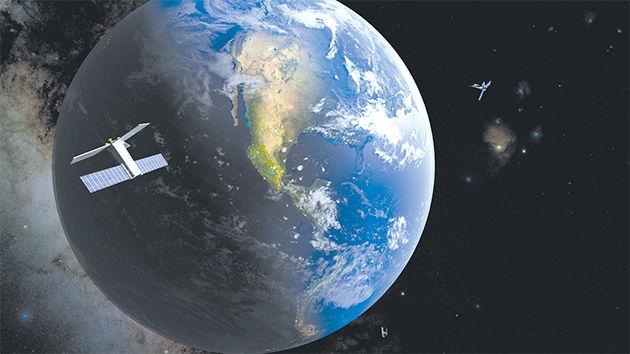SpaceX CEO Elon Musk recently revealed his plans to provide global satellite internet, but there are still many obstacles to overcome before it becomes a reality.
Musk’s satellite Internet, in theory, would have many advantages over what is available today — aside from global coverage, it would be significantly faster and would have more bandwidth. According to Ars Technica, the system would employ approximately 4,400 new satellites, and it could theoretically cover the whole planet with high-speed internet.
However, Walter Magnussen, director of communications at A&M, is not as optimistic about the plan.
“What’s happening right now within wireless communications is as the cellular companies and everything else are transitioning, beginning to transition, from 4G to 5G, the cell sizes become very, very small,” Magnussen said.
A cell, according to Magnussen, is the area that a single satellite can cover with the same speed of Internet, and that size is rapidly shrinking. With 5G coverage, the cell size could drop to only a few houses. Magnussen said to cover every place on the planet, there would either have to be millions of satellites or massive upgrades to satellite technology.
According to Radu Stoleru, associate professor of computer science and engineering, there may be many smaller problems with the satellites as well, namely their proposed Low-Earth-Orbit (LEO) trajectories.
“For LEO satellites, there are some additional challenges to reliability,” Stoleru said. “Because the view/connection to a satellite, from a fixed point on the Earth, is quite limited in time (when compared with GEO satellites, which remain in the same position on the sky — thus your satellite antenna at home does not need to move).”
Stoleru also cited unpredictable atmospheric conditions and enormous costs as reasons why Musk’s plan might prove problematic. However, while Magnussen agrees that costs may be too high for worldwide application, he believes there could be a niche market for high-speed satellite internet, namely those on ships or planes who need access to the internet no matter the cost.
However, according to Guy Almes, former director of the Academy for Advanced Telecommunications who first brought the internet to A&M, SpaceX’s recent launch of 10 Iridium-NEXT satellites could be a harbinger for their own satellite internet plans.
“Iridium’s total plan, as I understand it, is for 70 satellites to be launched, into low Earth orbit, and they can do internet connections up to speeds of 1.5 [megabits per second],” Almes said. “Including in really remote places for reasons that have to do with the low Earth orbit and their technology.”
Iridium plans to provide services like Facebook connectivity to remote parts of the world, but in the future, they hope to expand their network to do much more.
Almes also believes that although global satellite coverage is possible, in the past, it has been plagued by latency — it takes light too long to travel between traditional Internet satellites and the ground.
“What’s exciting about networks like Iridium is that if you pull those satellites into low Earth orbit,” Almes said. “Then the speed of light delay and getting the packets from the earth to the satellites and back to the earth are very low, but the problem then is in low Earth orbit, you need a whole bunch of them.”
A&M experts question SpaceX plans for satellite internet
January 29, 2017
0
Donate to The Battalion
$1815
$5000
Contributed
Our Goal
Your donation will support the student journalists of Texas A&M University - College Station. Your contribution will allow us to purchase equipment and cover our annual website hosting costs, in addition to paying freelance staffers for their work, travel costs for coverage and more!
More to Discover










